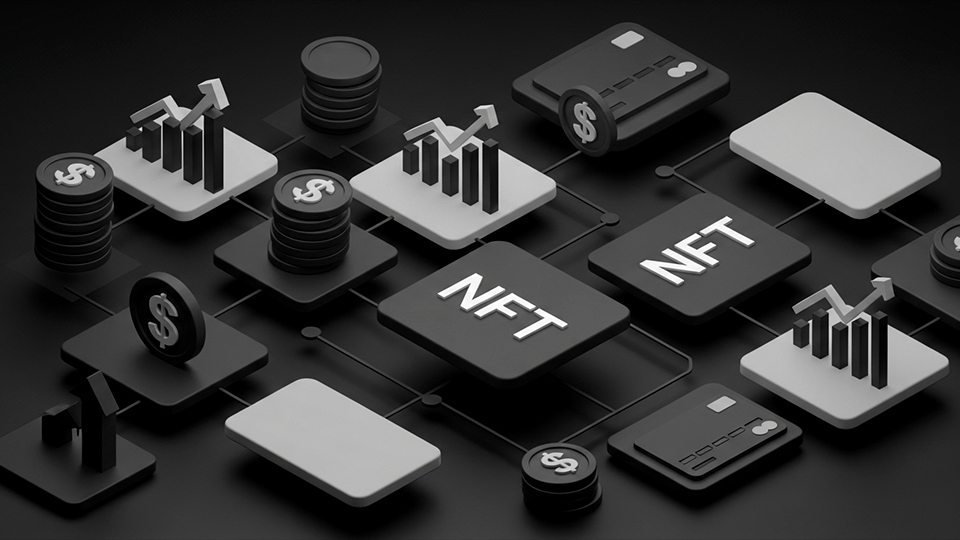Common Use Cases of RWA Tokenization
Real-World Asset (RWA) tokenization refers to the process of converting ownership rights in physical or traditional assets into digital tokens on a blockchain. This emerging application of blockchain technology is creating new opportunities across several industries by enhancing liquidity, accessibility, and transparency. Below are some of the most common use cases:
1-Real Estate
Real estate tokenization is one of the most practical and promising use cases of this technology. Traditionally, investing in property involves high entry costs, complex legal procedures, and limited liquidity. Tokenization solves these problems by enabling fractional ownership of real estate assets. Investors can purchase digital tokens that represent a portion of a residential or commercial property, giving them proportional rights to rental income and property appreciation. Furthermore, these tokens can be traded on secondary markets, significantly increasing the liquidity of an otherwise illiquid asset class. This democratizes access to real estate investments, making them available to a wider pool of global investors without the need for intermediaries like brokers or lawyers.
2-Commodities
The commodities market, which includes raw materials like gold, silver, oil, and agricultural goods, is traditionally bound by inefficiencies such as logistical constraints, price opacity, and complex ownership tracking. Tokenization introduces a new layer of efficiency by allowing commodities to be represented as blockchain-based tokens. These tokens can be easily traded, transferred, or even used as collateral. Each token is backed by a verifiable amount of the underlying commodity, ensuring transparency and trust. For example, gold-backed tokens allow investors to gain exposure to precious metals without the complications of physical storage, while still benefiting from price movements. This also enhances provenance tracking and reduces counterparty risks in global trade.
3-Fine Art and Collectibles
Art and rare collectibles have long been favored by high-net-worth individuals as alternative investments, but barriers such as high costs, illiquidity, and authentication issues have limited broader participation. RWA tokenization opens up the art market by allowing fractional ownership of valuable pieces. Through blockchain, each token is linked to a share of the asset and carries metadata confirming provenance and authenticity. This enhances investor confidence while making it easier to buy, sell, or trade shares in a Picasso or a rare collectible. It also creates new revenue streams for artists and collectors, who can monetize assets without selling the entire work. Moreover, smart contracts can automate royalty payments for artists on secondary sales.
4-Private Equity and Bonds
Private equity and fixed-income markets often face challenges related to accessibility, liquidity, and administrative overhead. By tokenizing private shares or bonds, companies can streamline capital raising, reduce issuance costs, and improve transparency. Investors benefit from increased flexibility, as tokenized securities can be traded in smaller denominations on digital platforms. Smart contracts embedded within tokens can automate dividend distribution, interest payments, and compliance checks. This reduces the reliance on intermediaries and simplifies regulatory reporting. Additionally, startups and SMEs gain access to a broader investor base by offering tokenized instruments that are easier to issue and trade than traditional securities.
5-Carbon Credits
The growing urgency around climate change has led to a surge in carbon credit markets, which allow entities to offset their emissions. However, these markets are often fragmented, with limited traceability and accountability. Tokenizing carbon credits addresses these issues by using blockchain’s immutable ledger to track issuance, ownership, and retirement of each credit. This prevents double counting and fraud while enabling real-time, transparent trading. Environmental groups, governments, and corporations can use tokenized carbon credits to meet sustainability goals more effectively and build trust among stakeholders. This model also helps drive capital toward green projects by simplifying credit certification and exchange.
6-Intellectual Property (IP)
Tokenizing intellectual property rights—such as music royalties, trademarks, patents, and software licenses—enables creators and innovators to monetize their assets in new ways. Each token represents a claim to part of the revenue generated by the IP, and smart contracts can automatically distribute payments to rights holders. This enhances liquidity in markets that are traditionally opaque and illiquid. For instance, a songwriter could sell tokens representing future royalty streams, offering fans or investors a stake in their success. Blockchain ensures transparency in usage tracking, reducing disputes and enhancing trust between creators, licensees, and end users.
Benefits Across Sectors
- Increased Liquidity: Tokenization converts previously illiquid assets into digital tokens that can be easily traded, improving market efficiency.
- Fractional Ownership: High-value assets become more accessible through fractionalization, lowering investment barriers.
- Transparency and Security: Blockchain technology ensures a secure, tamper-proof ledger of all transactions and ownership records.
- Automation: Smart contracts reduce administrative burden by automating key functions such as compliance, payouts, and transfer of ownership.
- Global Market Access: Digital tokens can be traded around the clock on international platforms, expanding the investor pool.
As blockchain infrastructure continues to mature and regulatory clarity improves, the adoption of RWA tokenization is set to accelerate. By merging traditional finance with decentralized technologies, this innovation is redefining how assets are created, owned, and traded. The growing range of use cases of RWA tokenization—from real estate and commodities to intellectual property—demonstrates its potential to transform global markets and broaden access to investment opportunities.





